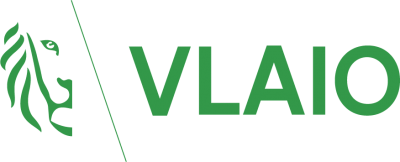Topics
We organise our actions in six thematic & strategic agendas:
Strategic Agendas:
Bio-economy
Circular Construction
Chemicals/Plastics
Manufacturing Industry
Food Chain
Water Cycles
Seven leverages provide additional support:
Leverage effects:
Lever Policy Instruments
Lever Circular Procurement
Lever Communication
Lever Innovation & Entrepreneurship
Lever Financing
Lever Jobs & Skills
Lever Research
What, why and how?
Why are we pursuing a circular economy?
Future visions 2050
How do we see our circular future?
About our management
Who steers what at Flanders Circular?
ReDESign
Recyclable, sustainable and effective signs
Today, the most common information boards for indoor use are based on PVC. The majority of these are not collected and recycled, but rather sent to less sustainable incineration. PVC particles that end up in the waste stream of mixed plastics have a very negative effect on the recycling process. The footprint of PVC, in terms of Global Warming Impact, is also very high.
Ghent University, together with design and communication agency Karakters and a number of partners, tackled this problem with the ReDESign project. The main objective: to find more sustainable, effective and recyclable alternatives to the commonly used information carriers in indoor environments.
The project had three main research questions:
Firstly, are there alternatives to the current PVC information carriers, which are of equal quality?
Secondly, are these alternatives recyclable? Can we reprocess the basic product into the same product again (closed loop recycling) or into another product (open loop recycling)? We also examined the impact of the ink on the recycling process and whether the alternatives fit into an existing recycling scheme on an industrial scale. Only then can we speak of a circular material.
Thirdly, are the alternatives ecologically and economically advantageous and do they meet the definition of sustainable? We carried out a limited cost price analysis linked to a life cycle analysis. The environmental impact was also examined in detail. We compared the alternative information carriers with the most common PVC information carrier.
Universiteit Gent
Partners Stadsbestuur Gent, Karakters BVBA
Sectors
Themes
Organisations
Website
MOST IMPORTANT
RESULTS
- Polypropylene (PP) based information carriers are a fully-fledged alternative to PVC information carriers.
- The alternative PP information carriers are recyclable in both open and closed loop recycling. They also fit into an existing recycling flow in an established recycling industry.
- De-inking the printed materials improves the quality of the recycled product, but has a negative impact on the ecological footprint. Therefore, we mainly prefer open loop recycling.
- PP information carriers are ecologically more advantageous than PVC. A cardboard information carrier (as a panel) has an even greater ecological advantage, but is not as colourfast or robust. In terms of cost price, cardboard and PP come first; PVC is more than half as expensive.
MOST IMPORTANT
LESSONS LEARNED
- For simple signage without high demands, ribbed cardboard, also readily available commercially, is a good alternative. This material has an excellent ecological footprint, scores well in terms of circularity and is affordable.
- For signs with higher requirements, including robustness and colourfastness, polypropylene is the best choice. PP is a high-quality plastic, widely available and cheaper than PVC. It has a good ecological footprint, a recycling network exists for it and it can be recycled dozens of times. It can also be used outdoors.
- High-quality PP can be used in its first life as the visible side of the information carrier and later as a filler. Because the panels consist of X-structures, less material is needed than for full panels. Thanks to this working method, extensive de-inking is not necessary.
- User tests show that we can consider the proposed materials as fully-fledged alternatives. Only for banners, the PP-based alternatives are more sensitive to wrinkling and tearing. Moreover, they contain a less desirable polymer. We will have to take this into account in a further roll-out.
WHAT DOES
THE FUTURE HOLD?
The search for high-performance alternatives led to positive results. Commercially available materials were found that scored positively on the four main parameters, namely quality, circularity, cost price and environmental footprint.
Due to time and budget constraints, we focused on circular plastics for indoor use in this project. By expanding the choice of alternatives or increasing the scope, a broader market segment can be explored. The advertising world, for example, holds great potential.
The shift to circular materials also goes beyond banners and information signs. For instance, the City of Ghent is considering replacing the stickers on service cars with more sustainable, recyclable alternatives. The City of Ghent also wants to commit itself to working out circular value chains together with partners.
If applied on a larger scale, this project could also be a first step towards the development of a more optimised waste management. However, it is now mainly up to the sector and policymakers to take these conclusions further. Within a circular Flanders there should be no more room for high quality materials to end up in the incinerator, when technically and logistically feasible alternatives exist on the market.
A final important learning point is the importance of cooperation between the various chains. At all levels, from producer to end-user, conviction and decisiveness, coupled with case studies and research, are needed to successfully implement an innovation, even in a limited domain.
















